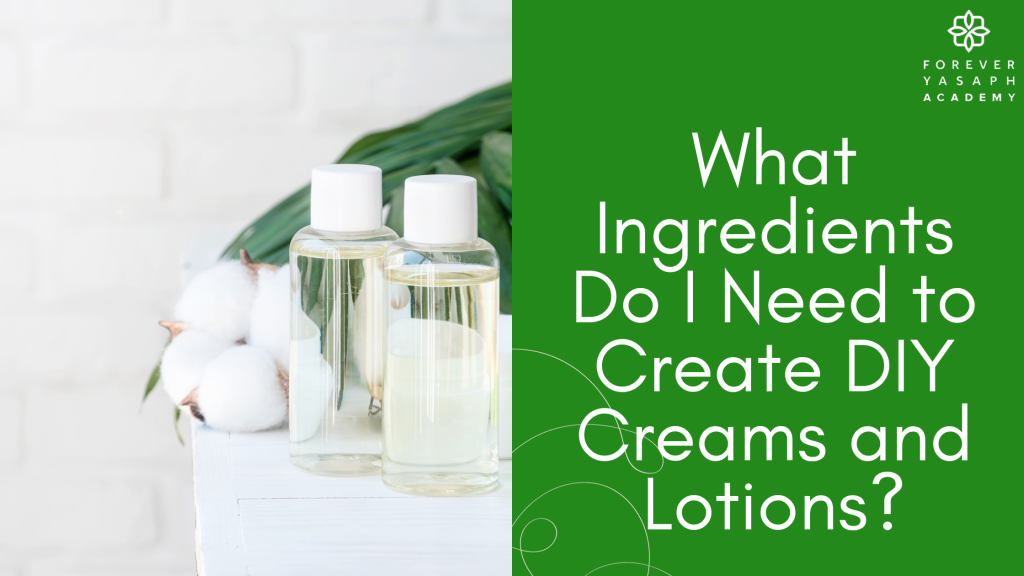
Introduction
In the realm of skincare, the allure of crafting your own creams and lotions is undeniable. The power to select each ingredient and tailor the product to your skin’s unique needs is an exciting prospect. However, with a plethora of options available, choosing the right ingredients can be overwhelming. In this comprehensive guide, we’ll walk you through the process of selecting ingredients for your DIY creams and lotions, ensuring that you create products that are both effective and personalized.
The Building Blocks of Skincare: Essential Ingredients
Creating a successful DIY cream or lotion requires a thoughtful selection of key ingredients that serve as the foundation of your formulation. These ingredients fall into several categories:
Base Ingredients:
– Carrier Oils: These oils form the main component of your product. Consider oils like jojoba, rosehip, and argan, each with its unique benefits for different skin types.
– Butter: Shea butter, cocoa butter, and mango butter add richness and nourishment to your product.
Active Ingredients:
– Hyaluronic Acid: A powerful hydrator that can hold up to 1000 times its weight in water, providing intense moisture to the skin.
– Vitamins (e.g., Vitamin C, Vitamin E): Antioxidants that brighten the skin and protect it from environmental damage.
– Peptides: Amino acid chains that support collagen production and address specific skin concerns.
Additives:
– Aloe Vera Gel: Soothing and hydrating, perfect for calming irritated skin.
– Glycerin: A humectant that draws moisture to the skin, keeping it supple.
Tailoring to Your Skin Type
Understanding your skin type is crucial for ingredient selection. Here’s a guide to help you:
Oily Skin:
– Look for lightweight, non-comedogenic oils like grapeseed oil.
– Opt for ingredients like witch hazel, which can help control excess oil.
Dry Skin:
– Choose rich and deeply moisturizing oils like avocado oil.
– Prioritize ingredients like shea butter and ceramides for nourishment.
Combination Skin:
– Strike a balance with ingredients like jojoba oil, which mimics the skin’s natural sebum.
– Incorporate gentle exfoliants like lactic acid to address both oily and dry areas.
Sensitive Skin:
– Opt for soothing ingredients like chamomile and calendula.
– Avoid fragrances and potential irritants.
Mature Skin:
– Look for ingredients rich in antioxidants, such as rosehip oil.
– Incorporate peptides and hyaluronic acid to address aging concerns.
Emulsifiers and Stabilizers
Emulsifiers play a pivotal role in blending oil and water in your DIY creams and lotions. Here are common emulsifiers you can consider:
– Beeswax: Creates stable and thicker emulsions.
– Cetearyl Olivate/Sorbitan Olivate: Derived from olive oil, these emulsifiers offer a luxurious feel.
Stabilizers, such as xanthan gum, help maintain the consistency of your formulation.
Preservatives: Ensuring Product Safety
Preservatives are a non-negotiable aspect of DIY skincare. They prevent bacterial growth and prolong the shelf life of your products. Opt for natural preservatives like radish root ferment or optiphen plus, which are safer alternatives to synthetic options.
Fragrance and Essential Oils
Fragrance can enhance the sensory experience of your skincare products. Essential oils not only add pleasant scents but also offer potential therapeutic benefits. Consider lavender for relaxation or tea tree for its antibacterial properties. Remember to use essential oils in safe dilutions.
The Art of Formulation
With your ingredient list in hand, it’s time to formulate. Start by creating a precise recipe that outlines the percentage of each ingredient. Online calculators can help you determine the exact measurements based on your desired batch size.
Conclusion
Crafting DIY creams and lotions is a journey that combines science, creativity, and self-care. By carefully selecting ingredients that align with your skin type and concerns, you can create products that cater to your individual needs. Whether you’re aiming to moisturize, brighten, or soothe, the power to personalize your skincare routine is within your grasp. As you delve into the world of DIY skincare, remember that experimentation is part of the process, and your journey towards healthier, glowing skin is enriched by the knowledge and empowerment you gain along the way. Sign up for our skincare products formulation here and our hair care products formulation course here to learn more about making your own DIY products.
FAQs for “What Ingredients Do I Need to Create DIY Creams and Lotions?“
A1: Base ingredients include carrier oils like jojoba and rosehip, along with butters such as shea, cocoa, or mango butter, providing the main components and richness to your formulations.
A2: Active ingredients include powerful hydrators like hyaluronic acid, antioxidants like Vitamin C and E, and peptides that support collagen production and address specific skin concerns.
A3: Additives like aloe vera gel, known for its soothing properties, and glycerin, a humectant drawing moisture to the skin, can enhance the efficacy of your formulations.
A4: Tailor formulations based on skin type. For oily skin, opt for lightweight oils; for dry skin, choose deeply moisturizing oils. Combination skin benefits from balancing ingredients, while sensitive skin thrives with soothing components.
A5: Common emulsifiers include beeswax, creating stable and thicker emulsions, and cetearyl olivate/sorbitan olivate, offering a luxurious feel derived from olive oil.
A6: Preservatives prevent bacterial growth and prolong the shelf life of DIY skincare products. Natural options like radish root ferment or optiphen plus are recommended for safety
A7: Fragrance and essential oils enhance the sensory experience. Lavender offers relaxation, while tea tree provides antibacterial properties. Use essential oils in safe dilutions for a pleasant and safe skincare experience.
A8: Stabilizers like xanthan gum help maintain the consistency of DIY skincare formulations, ensuring a smooth and well-textured product.
A9: Formulate by creating a precise recipe that outlines the percentage of each ingredient. Online calculators can assist in determining exact measurements based on your desired batch size.
A10: Experimentation is part of the DIY skincare process, allowing you to tailor formulations to your unique needs. Embrace the journey of discovery for healthier, glowing skin.
